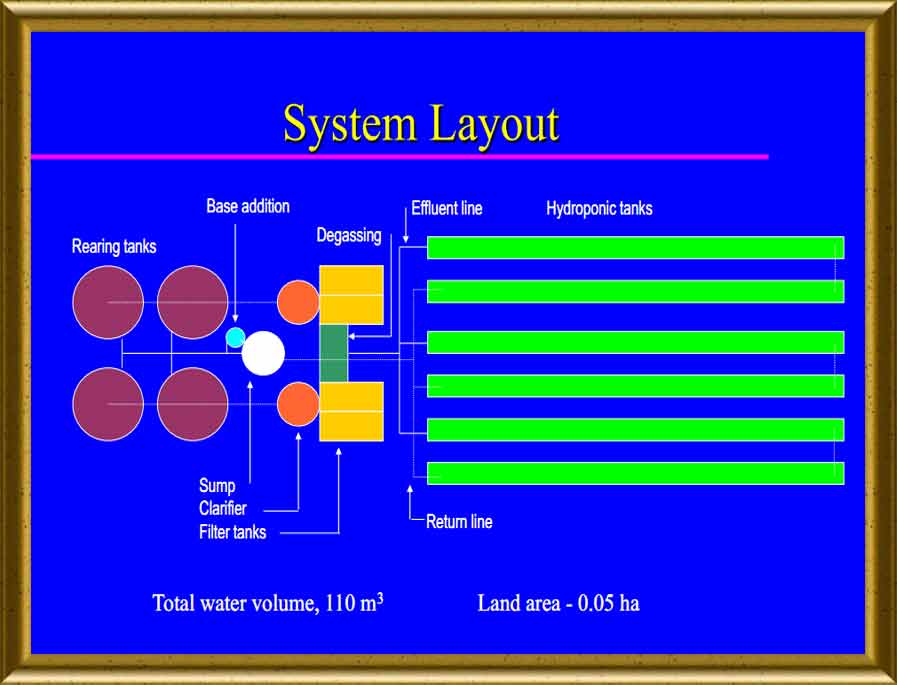Forget Password?
Enter your e-mail address below to reset your password.

?What is Aquaponics
The main principle of Aquaponics is very simple and fully reflects everything that happens in nature. Fish are raised in ponds, then the nutrient-rich water from these ponds is pumped into aquariums where vegetables, herbs, flowers and other crops absorb these nutrients to grow and thrive, and then these plants purify the water in which the fish are raised, which is returned to the ponds, so the cycle could repeat itself.
Although fish live in ponds, they live as if they were in their natural environment. Fish waste is purified by plants and replaced with clean water. Plants are grown in water with high levels of oxygen and nutrients, without having to worry about soil and growth related problems, such as: weeds, soil diseases, pests, heavy minerals, lack of oxygen or moisture and other toxins. Plants absorb only the water they need to grow.
What are the advantages of Aquaponics?
1- High productivity: where studies show that the productivity of hydroponics within aquaponic systems exceeds the productivity of soil by more than twice the yields of vegetables and fruits.
2- In closed circular systems of aquaculture, large quantities of water are discharged to prevent nutrient accumulation. In aquaponic systems, these nutrients do not accumulate because they are used to produce another high-value product - plants.
3- The absorption of these nutrients significantly reduces the discharge of fish breeding water to natural water bodies and protects lakes, rivers and the wider aquatic environment from nutrient enrichment and excessive algal growth.
4- Fish secretes ammonia, which is toxic at high levels, so a biological filter is required to remove ammonia. In the Aquaponic system, plants and aquaculture ponds become a natural biological filter, so there is no need for a separate bio-filter at a very high cost.
5- There is no need for intensive monitoring of water quality as required by aquaculture or aquaculture systems, which saves time and reduces costs, thus Aquaponic systems are easy to operate and maintain, and medium-sized hobbyist or farmer can manage them very successfully.
6- Increase the profitability of Aquaponic commercial systems due to the availability of free food for plants, reduced water needs to less than 2% per month, and no need for a separate biological filter, and the reduction of costs, effort and time of water-quality control, and the common costs of operation and infrastructure.
7- In the aquaponic system, plant crops cannot be sprayed with chemical pesticides, so they can be marketed as "organic and pesticide-free", increasing the likelihood of higher profits.
8- In aquaponic systems, fish and vegetables are produced intensively over the year, outdoors in suitable climates or in greenhouses.
9- Aquaponic systems can be located near urban markets, reducing transportation costs and providing high quality fresh fish and plants. Aquaponic systems can be established almost anywhere.
10- Aquaponic systems produce two crops from a one single source; fish feed act as plants nutrients. This makes Aquaponic more efficient in terms of nutrient use than other farming systems.
11- No need for tillage and cultivation, while you need these operations when planting in the soil and may need to replace the soil in protected agriculture.
12- Large reduction in the amount of water, where agriculture without soil meets the requirements of plants from water, without excessive losses
13- There is no need for good soil, as this type of agriculture can be constructed on saline, rocky or unsuitable soils.
14- No need for agricultural cycle when growing crops, where it is possible to grow any crop while cultivation needs an agricultural cycle and thus determine the crops to be planted.
15- Cultivation of a single crop can be repeated several times during the year when suitable conditions are available, while soil cultivation needs time to prepare the ground when the crop is repeated in the same land.
16- The large reduction in the land, because it is possible to achieve high productivity in agriculture without soil, in a specific piece of land, through increasing the density of plants since the lack of competition for nutrients. For example, the production of a system of a soil-less agriculture with an area of 860 m2 produce an area of 75 hectares of irrigated land.
17- Almost no fertilizers used, as hydroponics requires lower rates of organic and inorganic fertilizers, for the growth of plants, which gets 99% of it from the fish residues, while land agriculture, especially the protected ones, require large quantities of inorganic and organic fertilizers.
18- A large reduction in the labour force.
19- The quality of the crop produced in soil-less agriculture, in terms of appearance and nutritional value.
Share your ideas and get help
Aquaponic commercial farm in the United States Virgin Islands model
2016-02-07
Tamer Gaber
القاهرة
![]() Mechanical
Mechanical
Fill the below form to contact the innovator:
0 Comments:
If you want to rate/comment, please login first.